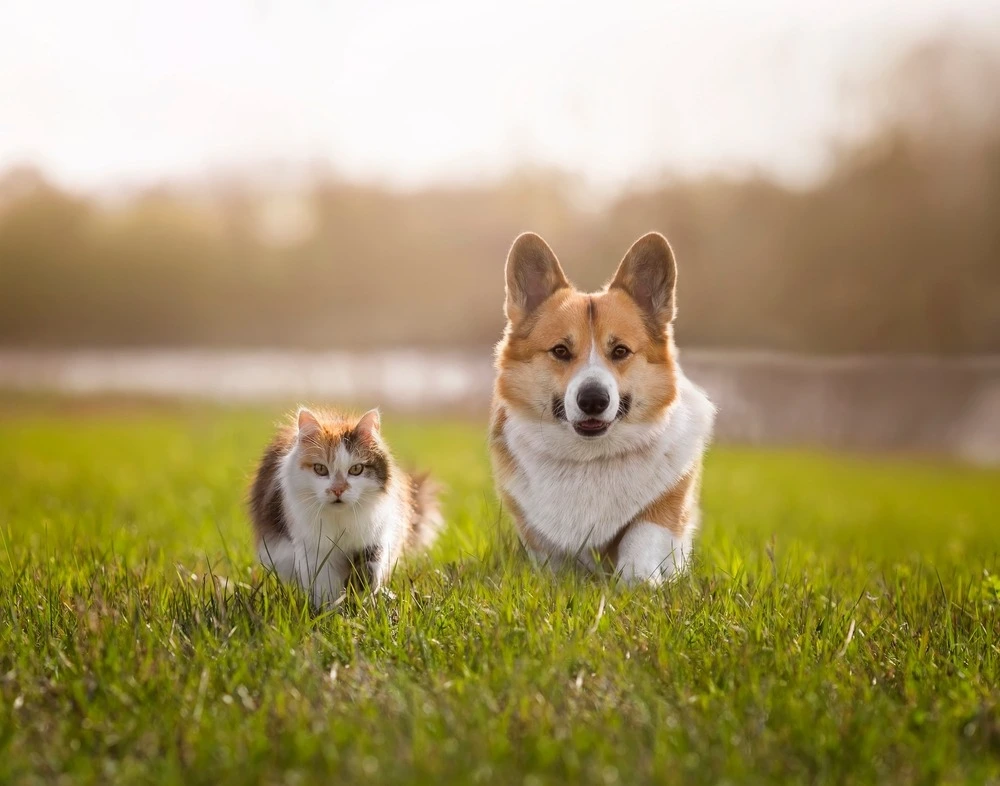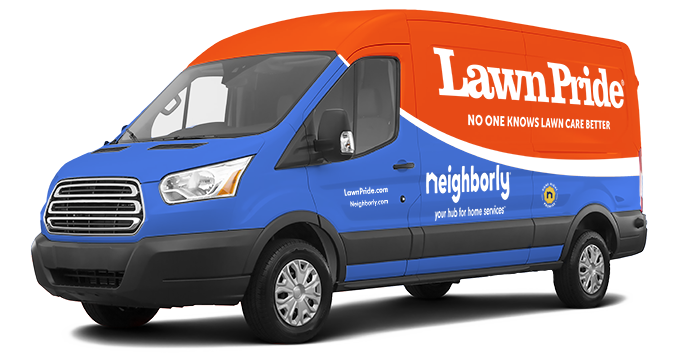
Imagine your good boy romping joyfully on an emerald-green lawn. It doesn't have to be just a dream. We'll explain how to choose dog-friendly grass seeds that grow to be more tolerant of pet activity and the pet-friendly lawn care that keeps it looking great. Designing and maintaining pet-friendly landscaping requires some planning, consistency, and maintenance, but the results are well worth it.
Challenges of Maintaining a Lawn with Pets
Healthy, happy dogs can damage lawns in multiple ways, each of which can be solved with pet-friendly lawn care.
- Dog Urine: Dog urine contains high levels of nitrogen, salt, and acid, leading to yellow spots in the grass. Frequent walks and great hydration reduce the amount your dog leaves on the lawn while diluting the output. Rinsing the grass where your dog pees dilutes it further.
- Dog Poop: Because of a dog's high-protein diet, dog poop, too, is high in nitrogen as well as bacteria. The poop itself also smothers the grass it rests on and prevents photosynthesis. This combo causes yellow and brown spots in the lawn. Teach your dog to use a designated corner of the yard for pooping, and pick it up the same day.
- Dog Play: Choose a dog-friendly grass seed for a lawn that can withstand some of your dog's play. Then, include some pet-friendly landscaping features that promote play and exercise without damaging the grass.
Benefits of Pet-Friendly Landscaping & Design
When a dog is a member of the family, their health and happiness are essential. Pet-friendly landscaping enriches their environment, making their home more safe and fun while providing you with a lawn you can be proud of. In our book, that's a win-win.
Designing a Pet-Friendly Lawn
Let's see how to create a lawn and pet-friendly landscape that you and your best friend can enjoy.
Durable Grass Varieties
Kentucky Bluegrass, Bermudagrass, Zoysia, and Tall Fescue are especially durable grasses that tolerate the wear and tear of pet play and can repair themselves. Each offers better-than-average resistance to pet urine, though all will benefit from dilution efforts.
Most Durable Grass for Dogs
Tall Fescue is the most durable grass for dogs, standing up to their play, and with the best tolerance for dog urine. It thrives in a variety of climates and has deep roots, making it relatively drought-resistant.
Pet-Friendly Landscaping Features
Even artificial turf will struggle to stand up to your pet's play if it is the sole feature of interest in the yard. Provide the stimulation your best friend deserves, and your lawn will prosper.
Play Areas
A dog's dream play area will include:
- A deep sandbox for digging
- A kiddie pool for splashing on hot days
- Pet-friendly toys and equipment to jump over
- A shady spot to rest
Bonus points if you build a dog "window" into the fence.
Paths
Establish a few paths for your pet to patrol their territory without wearing a groove through your lawn. Light-colored flagstones don't get as hot in summer as darker stones. Consider using cedar mulch, which also helps to repel fleas.
Safe Plants
Include dog-safe plants in your pet-friendly landscape to offer new smells and visual interest. Some choices, like catnip, lavender, lemongrass, marigolds, sage, and rosemary, also repel fleas, making them doubly welcome in your pet's garden. You might also consider grass alternatives for a living ground cover that tolerates paw traffic and pet pee. Clover, Irish moss, and creeping thyme are non-toxic for pets, and each makes a durable and handsome groundcover.
Essential Maintenance for a Pet-Friendly Lawn
Pet-friendly lawn care is a bit different from general lawn maintenance.
Effective Watering Practices
Watering the lawn washes your pet's urine off the leaves, which can turn yellow and burn from the extra nitrogen, acid, and salt. Frequent watering can prevent the development of yellow patches, as can rinsing the area your dog uses as soon as he's done.
Mowing for Pet-Heavy Lawns
Set your mower blades to the highest recommended height for your grass type. Letting your grass grow longer helps to disperse pet urine, preventing it from soaking into the soil. Pet-friendly lawn care involves less frequent mowing with a sharpened blade to minimize damage to the grass and burnt ends, which can make yellowed spots look worse.
Safe Fertilizers for Pets
When fertilizing the lawn, read the label or quiz your lawn services provider to ensure it is safe for your furry friend. Follow the directions about watering the treatment and the time to let it dry before your pet walks on the lawn.
Managing Pet Damage
As is so often the case, preventing pet damage is far easier than repairing it. Water your lawn frequently, especially any areas where your pet pees. Ideally, rinse the grass right after they do. Pick up any waste daily rather than letting it sit. Remember: frequent walks are great for your dog and the lawn.
Repairing Urine Damage and Bare Spots
Grass damage and bare spots can occur on any lawn, even when your best friend is a really good boy. So, pick up a bag of crushed gypsum at a big box store. Gypsum is a mineral that improves soil health and neutralizes the salts in pet urine. When you see a yellow or bare patch, sprinkle some gypsum on it and water it in well. Give it a few days to green up.
Once you have chosen your dog-friendly grass seed, keep some handy for overseeding bare spots that don't fully revive with the gypsum.
Call on Lawn Pride for Pet-Friendly Lawn Care Support
We get it. Sometimes, life gets too hectic to keep up. When you need a helping hand with pet-friendly lawn care services, trust the pros at your local Lawn Pride®. Keep your pet healthy and happy, and we'll do the same for your lawn. We know you'll be pleased with our service because the Neighborly Done Right Promise® backs everything we do.
Request a free estimate today, or contact us with any questions.
